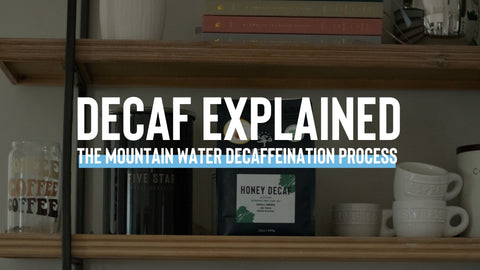Is There Mold in Your Coffee? Here’s What You Really Need to Know
If you've seen headlines or influencer clips warning about mold in coffee, you're not alone.
"Your morning brew is full of toxic mold!"
"Only coffee labeled 'mold free' is safe!"
While these claims sound alarming, most of them come from fear-based marketing, not facts. Let’s break down what’s true, what’s exaggerated, and how to confidently enjoy your coffee without mold concerns.
☕️ Myth 1: All coffee contains dangerous mold.
This is one of the most common coffee mold myths—and it's misleading.
Yes, coffee is a natural agricultural product. That means if it's poorly handled—think damp storage, improper drying, or long shipping delays—mold can develop on green coffee beans.
But that doesn’t mean your cup is full of toxins. In fact, the specialty coffee industry has rigorous standards to eliminate those risks.
✅ Fact: Specialty coffee is held to higher standards.
If you’re buying organic coffee that’s mold free from a trusted roaster like Five Star Coffee, you’re already ahead.
Here’s what we do:
- Work with producers who dry beans on raised beds to prevent moisture buildup
- Store and import coffee in controlled environments
- Visually inspect and cup-test all coffee before roasting
- Roast in small batches to ensure peak freshness
The result? Coffee without mold and without the hype.
☠️ Myth 2: You need “mold-free certified” coffee to stay safe.
This phrase is everywhere online—"coffee mold free!"
But here's the truth: there’s no official certification for mold-free coffee recognized by the industry.
Most brands using this term are targeting fear, not educating customers. They're not necessarily selling better coffee—just better marketing.
At Five Star Coffee, we focus on quality, transparency, and practices that naturally prevent mold in coffee—without gimmicks.
💡 Fact: Freshness > Fear
Even great coffee can go stale or degrade if it's not stored properly—especially in your home. And if you’ve ever dealt with mold in a coffee pot or seen buildup in your machine, you know how fast moisture can be a problem.
Avoid these issues by:
- Storing beans in a cool, dry place in an airtight container
- Buying whole bean coffee, not pre-ground
- Cleaning your coffee machine regularly to avoid coffee machine mold
Pro tip: If your coffee gear smells off or looks slimy—don’t ignore it. Regular cleaning is key to enjoying coffee without mold at home.
🤒 What are coffee mold symptoms?
While rare, drinking coffee contaminated with mold (especially from low-quality or improperly stored beans) may lead to:
- Headaches
- Digestive discomfort
- Brain fog or fatigue
- Allergy-like symptoms
If you’ve ever wondered about coffee mold symptoms, it’s likely because you’ve experienced bad coffee—or unclean brewing equipment. Don’t panic—just upgrade your beans and clean your gear.
🔍 Why Five Star Coffee is Different
We’re proud to roast coffee that’s:
- Specialty-grade and defect-free
- Naturally low-risk for mold thanks to our sourcing and processing
- Freshly roasted, not sitting in warehouses
- Available in organic coffee mold free options like our award-winning Honey Process Decaf
- And we never use fear tactics to sell you something you don’t need.
✅ The Bottom Line: Skip the Fear, Keep the Flavor
If you're buying freshly roasted, specialty-grade coffee from a trusted source and cleaning your equipment regularly, you're already enjoying coffee without mold.
Want peace of mind in every cup? Stick with roasters who value transparency, quality, and direct trade relationships—like we do at Five Star Coffee.
🔗 Ready for clean, flavorful coffee—without the gimmicks?
Shop our fresh, small-batch roasts now: Browse Coffees
☕️ Real coffee. Real quality. No mold myths.

